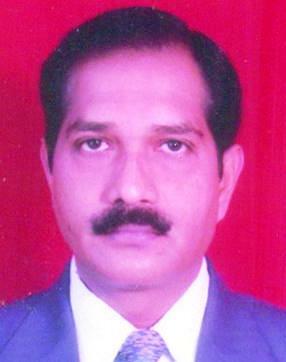

The world saw the last pandemic in 1918. We are now in the midst of the COVID-19 pandemic, hopefully on the path of recovery. Can anyone say for sure that COVID-19 is going to be the last pandemic and that we are moving in the right direction in terms of our approach and innovation?
It is true that the outbreak of the COVID-19 pandemic has changed the world in many ways. It has changed our behavior, our thought process and approach towards life,and also our scientific temperament. It has also impacted the economy, the health sector and education heavily. But the psychological impact on us has been far greater than the material loss.
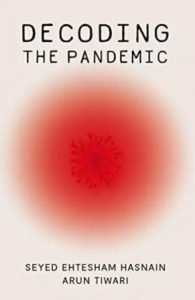 The book, “Decoding the Pandemic” by Seyed Ehtesham Hasnain and Arun Tiwari and another book which is to come out in May this year, “How to Prevent the Next Pandemic” by Bill Gates, can prove to be a benchmark in the history of the COVID-19 pandemic. It is aimed at reaching out to the common man in terms of the overall nuances of pandemic emergence and re-emergence and how best to control them.
The book, “Decoding the Pandemic” by Seyed Ehtesham Hasnain and Arun Tiwari and another book which is to come out in May this year, “How to Prevent the Next Pandemic” by Bill Gates, can prove to be a benchmark in the history of the COVID-19 pandemic. It is aimed at reaching out to the common man in terms of the overall nuances of pandemic emergence and re-emergence and how best to control them.
The book, “Decoding the Pandemic,” has been released in many countries in Europe, USA and Thailand and India. The author, Professor Dr Seyed Ehtesham Hasnain, an eminent immunologist who was Member (2004-14), Scientific Advisory Council to the Prime Minister of India. He was awarded the Order of Merit (Verdienstkreuz, 1. Klasse) by the President of Germany and the Padma Shri by the President of India.
The co-author of the book, Professor Arun Tiwari is an Indian missile scientist and co-author of five books with former President of India, Dr. APJ Abdul Kalam, including “Wings of Fire”. Tiwari joined Defence Research & Development Organisation (DRDO) in 1982 as a missile scientist. He spent the next 15 years involved in India’s military missile development efforts. He developed India’s first Titanium Air Bottle used in ‘Trishul’ and ‘Akash’ missiles and designed Air frames for both missiles.
In an interview with Mohd Naushad Khan, Hasnain spoke in detail about the various aspects of the pandemic, the history of the pandemic, the last pandemic, the nature of the virus, scientific and biological advancements on antibodies, the impact of the pandemic and loss of life, the challenges ahead and the way forward.
Please tell us about your book and why you think the book, “Decoding the Pandemic” was important at this stage?
We were concerned about the fear-mongering and the restrictions imposed and thought it proper to present the facts as those were, especially about the 1918 pandemic. We also tried to put to rest the various conspiracy theories and assure readers about the ability of science to come up with solutions, which it did. Taking a scientific approach, the book explains the emergence of variants as increasing in their contagiousness but losing lethality. The book stands vindicated.
What is the focus of this book and how is it going to help researchers and people in general?
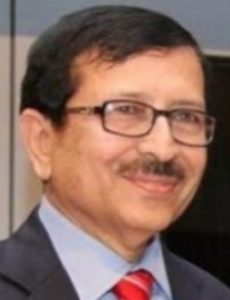
On the research front, getting to know more about this virus reveals how smart SARS-CoV-2 is.It is perhaps the smartest pathogen known to humanity! We are very clear about the re-emergence of more viruses and therefore called for an organized effort to make good antiviral drugs, which are accessible and affordable. Science must not become a tool of commerce and do only what is profitable. It must focus on what is necessary. Everyone knows how multinational pharmaceutical companies exploited the HIV-AIDS situation and the way Indian companies rose to the occasion and saved millions of lives by producing effective and affordable antiviral drugs. Unfortunately, since then, a lot has changed and there is little freedom left for good science to be funded for the overall good of humanity.
In your book, you have said that Covid-19 turned out to be the most significant developmental setback to the celebrated Millennium Development Goals. Can you elaborate?
The poor suffered the most during the pandemic. The plight of the common people, the daily wage earners, the contractual employees who walked long distances after having lost their livelihoods in the cities was quite appalling. Since it was not the focus of the book, we left it at saying that the pandemic derailed the Millennium Development Goals. Unfortunately, the world has coined terms like soaring stock market indexes and GDP as the Good News, whereas livelihood stress is not measured beyond the inflation rate, which hides more than it reveals.
 So, what is not measured, is not reported, and therefore does not exist. Both the authors have been teachers and every time we hear the celebration of online classes that saved academic years, we feel uncomfortable about the plights of millions of poor students who somehow managed to connect through their parents’ rudimentary phones. COVID-19 created the “digital divide” in India over and above the social and other disparities our great country is striving to ameliorate.
So, what is not measured, is not reported, and therefore does not exist. Both the authors have been teachers and every time we hear the celebration of online classes that saved academic years, we feel uncomfortable about the plights of millions of poor students who somehow managed to connect through their parents’ rudimentary phones. COVID-19 created the “digital divide” in India over and above the social and other disparities our great country is striving to ameliorate.
You have also discussed about the distinct nature of the virus and Plasma Therapy. According to you how useful was Plasma Therapy?
Plasma therapy, in most of the cases, proved ineffective and was later discontinued. In the initial stages of the pandemic, there was a lot of confusion. Both patients and doctors were desperately looking for solutions and it appeared to be a common-sense remedy. But once clinical outcomes were found wanting, it faded out. In the initial phase of the pandemic, anything that could possibly work, was tried. The president of one country even recommended drinking sanitizers and detergent!!!
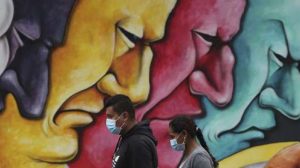
What are the lessons we can learn from the Covid-19 pandemic as the new normal is likely to change after the emergence of one variant or another?
You have asked a very important question, and the answer is very disheartening. There are no apparent lessons learnt. Our healthcare delivery system is disease and service billing based. This has failed and will fail once again if it is not changed. The answer lies in setting up a large number of well-equipped and well-staffed government and charitable hospitals, ideally one in each district, and a crackdown on profiteering in private hospitals. Though there was a hue and cry about exorbitant billings and black marketing of oxygen cylinders, no one was convicted or reprimanded by the regulatory bodies. We are currently hoping that the pandemic has receded, but one can’t be sure, knowing how clever this virus is.

How has the emergence of variants bewildered the scientists and researchers of the world?
Not at all! Scientists were not bewildered. The virus was decoded at lightning speed and every variant was promptly detected. The speed of vaccination development and efficacy was phenomenal. What continues to amaze the scientists is the speed and the targeted way the virus continues to evolve.
If we compare the present pandemic with the last pandemic in 1918, what are the most striking features and how has it impacted research and technological advancement? Is there any parallel between the two pandemics?
In 1918, it took millions of deaths to know about the pandemic. Back then, there were no vaccines. Beyond taking precautions, there was hardly anything else that could have been done. This time, vaccines made all the difference. And even before, those strict lockdowns had prevented the pandemic from going beyond control.
You have written in the book that the question that baffled most is whether the new variants would still be taken care of by the vaccination. Whether the new variants carry the risk of re-infection to those who survived the Covid-19 infection, the answer to these questions will determine the unfolding of the pandemic. Can you please explain?
The emergence of new variants continues to be of concern. What is more worrisome is the pattern of mutations. It is natural biology that every pathogen mutates while spreading and there is a general pattern of it becoming more contagious but less virulent. It appears that the virus is resorting to “targeted” mutations to ensure its pathogenicity. As more people have antibodies, either by recovering from the infection, or vaccination, they will get infected but will recover sooner and with lesser damage.
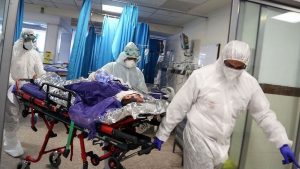
What is the most important aspect of your book, which you feel can guide the researchers trying to fight the variants one after another?
The epigraph of the book is a statement from Marie Curie, the celebrated scientist with Nobel Prizes in Physics and Chemistry, “Nothing in life is to be feared, it is only to be understood. Now is the time to understand more, so that we may fear less.” COVID-19 activated a generation of scientists. We see it nothing short of a Biology Renaissance.
Biological sciences will dominate all areas of scientific enquiry in this century, for sure. Government agencies will fund development for antiviral therapeutics not only for India but also the 5 billion poor people of the world, many of whom are living in the United States itself, unprotected, uncovered, and uncared for.
You have emphasized on the development of antibodies for specific SARC-CoV-2 proteins which would not only end the nightmare of COVID-19 but also provide a platform to tackle future infectious agents. Can you please explain?
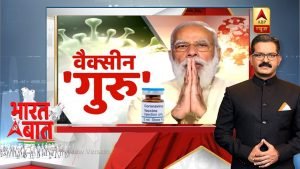 As a scientist, with the success of the mRNA vaccine, cancer treatment must go through an overhaul. We are optimistic about seeing an anti-diabetic vaccine in our lifetimes, by which, we mean in the next few years. The issue is delinking medicine from big money, which owns it right now.
As a scientist, with the success of the mRNA vaccine, cancer treatment must go through an overhaul. We are optimistic about seeing an anti-diabetic vaccine in our lifetimes, by which, we mean in the next few years. The issue is delinking medicine from big money, which owns it right now.
The success of the Indian vaccination program, where people got it free, and policy of the planned roll-out of a medical college in every district, are the fruits that the adversity of COVID-19 have left behind. The ongoing evacuation of thousands of medical students from a war zone should be seen as a wakeup call to prevent similar catastrophic situations in the future.
Also Read: Pandemic Profits and Politics – the saga of India’s “La Casa De Papel”
According to you, how important is it for scientists to strike a balance between immune response and off-target effects?
A lot of immune response remains a mystery. We need to understand more about memory response and long-lasting immunity against a pathogen. “Herd immunity” can never be pathogen neutral, at best, it can be pathogen specific, and the rules remain undefined. These will continue to engage biologists for decades to come. Off-target drugs have never been a lasting solution. The disease tuberculosis (TB) is still there and continues to take over a million lives every year, the largest number of deaths coming from India.
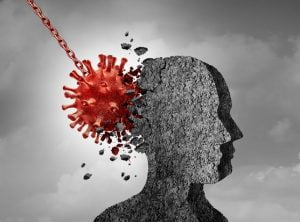 The boon of antibiotics has been turned into a curse, like a monkey wielding a sword. Antibiotics are sold freely, prescribed liberally, and consumed by people as self-medication for treating symptoms that have nothing to do with any bacterial infection. This has created a whole spectrum of anti-microbial resistance (AMR) and many pathogens, thought to be done away with, return. The population stress, water stress, pollution stress, food adulteration, and above all, malnutrition, are the real problems and unless mitigated will invite and invent new maladies.
The boon of antibiotics has been turned into a curse, like a monkey wielding a sword. Antibiotics are sold freely, prescribed liberally, and consumed by people as self-medication for treating symptoms that have nothing to do with any bacterial infection. This has created a whole spectrum of anti-microbial resistance (AMR) and many pathogens, thought to be done away with, return. The population stress, water stress, pollution stress, food adulteration, and above all, malnutrition, are the real problems and unless mitigated will invite and invent new maladies. ![]()
Also Read:
Centre’s Opaque Auction Rules For Pulses Rip Off Govt Coffers, Help Millers Strike Rich
Need to amend laws like UAPA to provide for punishment for those who slap false cases
Global Arms Trade: Who are the real winners?
Why not 40 pc tickets for women in Punjab and elsewhere?
Punjab – How a deadly cocktail of Agri-Water-Energy nexus going to destroy it?

Disclaimer : PunjabTodayTV.com and other platforms of the Punjab Today group strive to include views and opinions from across the entire spectrum, but by no means do we agree with everything we publish. Our efforts and editorial choices consistently underscore our authors’ right to the freedom of speech. However, it should be clear to all readers that individual authors are responsible for the information, ideas or opinions in their articles, and very often, these do not reflect the views of PunjabTodayTV.com or other platforms of the group. Punjab Today does not assume any responsibility or liability for the views of authors whose work appears here.
Punjab Today believes in serious, engaging, narrative journalism at a time when mainstream media houses seem to have given up on long-form writing and news television has blurred or altogether erased the lines between news and slapstick entertainment. We at Punjab Today believe that readers such as yourself appreciate cerebral journalism, and would like you to hold us against the best international industry standards. Brickbats are welcome even more than bouquets, though an occasional pat on the back is always encouraging. Good journalism can be a lifeline in these uncertain times worldwide. You can support us in myriad ways. To begin with, by spreading word about us and forwarding this reportage. Stay engaged.
— Team PT


Copyright © Punjab Today TV : All right Reserve 2016 - 2024 |